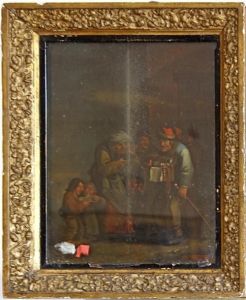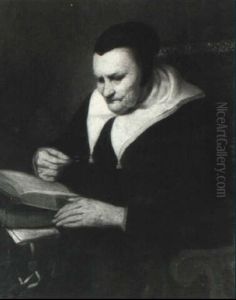Heyman Dullaert Paintings
Heyman Dullaert was a Dutch painter, poet, and engraver born on February 6, 1636, in Rotterdam, Netherlands. Often recognized for his contribution to the Dutch Golden Age of painting, Dullaert was a multifaceted artist whose works encompassed a variety of subjects including portraits, genre scenes, and religious themes. Despite his talent, he is not as widely known as some of his contemporaries such as Rembrandt, with whom he is sometimes associated.
Dullaert showed artistic promise at an early age and was initially taught by the painter Cornelis Saftleven. He later moved to Amsterdam, where he became a student and follower of Rembrandt van Rijn. Under Rembrandt's influence, Dullaert developed a strong command of chiaroscuro and a sensitive approach to depicting human emotion, both of which became hallmarks of his work. His style is characterized by warm tones, adept use of light and shadow, and a focus on the psychological depth of his subjects.
In addition to his painting, Dullaert was also an accomplished poet and engraver. His poetry was well-regarded among his contemporaries, and he published a collection of poems during his lifetime. Furthermore, Dullaert engraved some of his own designs, which often mirrored the intimate and emotive qualities found in his paintings. However, unlike his visual art, his poetry did not enjoy the same lasting legacy.
Despite Dullaert's skills and the quality of his work, he never achieved significant fame during his lifetime. His paintings were often overshadowed by those of his teacher and other prominent Dutch artists of the period. Today, his works are held in various collections and are studied for their contribution to the understanding of Rembrandt's influence on his pupils and the broader context of Dutch Golden Age painting.
Dullaert's artistic career was relatively short-lived, and he eventually turned away from painting. Later in life, he focused on business pursuits and lived a modest life in Rotterdam. Heyman Dullaert passed away on November 15, 1684, in his hometown. While his paintings were not extensively collected or celebrated during his lifetime, posthumous recognition has brought more attention to his artistic legacy, and his works are now appreciated for their emotional depth and technical proficiency.














